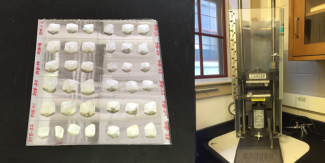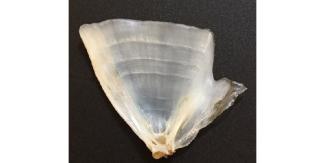Age and Growth
Background
Age and growth information is essential in estimating the age-structure of a fish population. Understanding the age-structure of a population allows scientists to make informed management decisions regarding acceptable harvest levels for a species. In recent years, diet composition of finfish has become increasingly important in understanding the age and growth of a population. Diet composition of a species may help to inform managers on whether an observed change in a population may be due to prey availability. Understanding predator–prey dynamics can also allow managers to utilize a multi-species modeling approach by which they can better understand not only the population dynamics of one particular target species, but other choke or prey species that may be associated with the target species.
This study is aimed to characterize the age-structure and diet composition of stocks whose ranges extend into Narragansett Bay and will supplement data collected by the Northeast Area Monitoring and Assessment Program (NEAMAP) nearshore trawl surveys, which limit their sampling to the mouth of Narragansett Bay. Data collected in this study is already used in several stock assessments and we expect that number to increase each year as benchmark stock assessments are conducted.
Study Design
The age and growth study collects biological data from recreationally and commercially important species of finfish. Depending on the data needs for each species, data may be collected year-round at wholesale seafood dealers, from fish racks that have been donated to the program, or from other RIDEM surveys (trawl survey and ventless pot survey). Hard parts collected for ageing purposes brought back to the DEM Ft. Wetherill Laboratory for further processing.
Study Equipment
While in the field and in the laboratory collecting biological data, staff utilize a variety of equipment including a fish measuring board, a scale, a knife, and scissors. When processing hard parts for ageing, a Carver heat press is used for making fish scale impressions on acetate and a Buehler IsometTM slow speed saw is used for thin sectioning otoliths.
Sampling Methods
Lengths, weights, and age structures are collected from target species including: black sea bass, bluefish, menhaden, scup, striped bass, summer flounder, tautog and weakfish. Depending on the species and the source of the sample, either scales, otoliths, or opercle bones may be collected for ageing. Scales are lightly cleaned and pressed onto acetate with a carver heat press. Scale impressions are then read on a microfiche reader. For each otolith pair collected, a single otolith is thin sectioned using a Buehler IsometTM slow speed saw. Thin sections are mounted onto glass microscope slides and aged using a dissecting microscope. Opercle bones are boiled to remove any fish tissue and then aged by holding the bones up to fluorescent lighting.
Fish collected on the RI DEM trawl survey and ventless pot survey that are brought back whole for processing, are dissected to collect additional information including sex, maturity, and diet data. For diet data, stomachs are excised from the fish and all contents are examined, identified to the lowest taxonomic level possible, weighed, and enumerated. All biological data is entered and stored into a biological sampling database.
Sampling Frequency
Biological samples are collected year-round as fish are available with the bulk of sampling occurring from April through October. For each species a target number of samples are collected that satisfy Fishery Management Plan requirements or current stock assessment needs.
For more information about the survey please contact Nicole Lengyel



